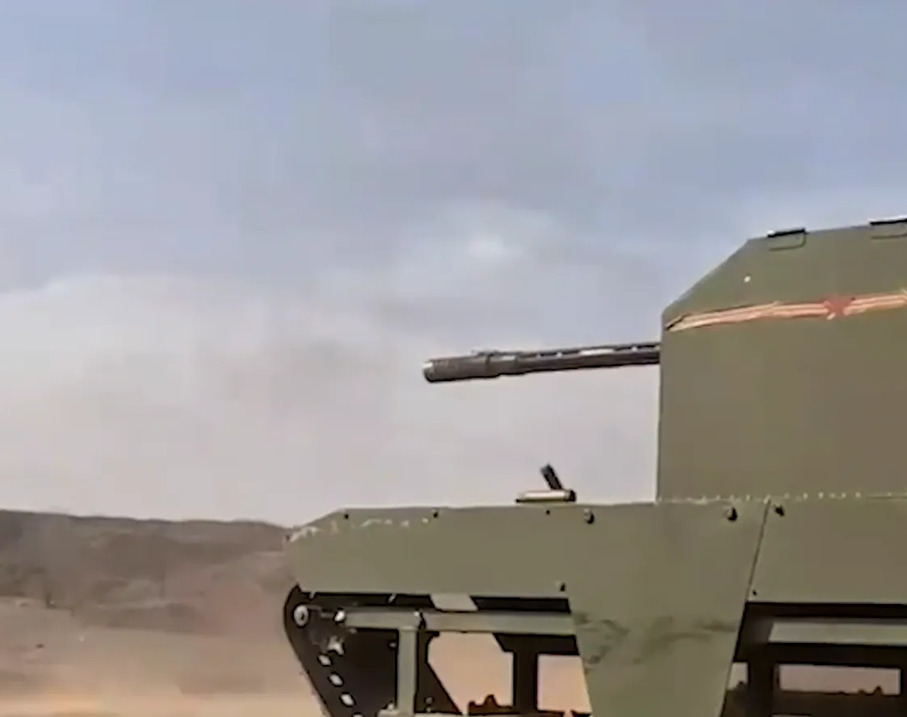
The first mechanical foot soldiers crawled onto battlefields around the turn of the millennium, clunky prototypes that moved like wind-up toys in a sandbox. Today, their descendants slither through the Donbas mud with the purposefulness of hunting panthers.
The Uran-6 sapper bot operates like a metallic truffle pig - sniffing out explosives with its clattering flails while its lightweight armor shrugs off rifle rounds like hailstones on a tin roof. Spotted near Sudzha after Ukrainian forces retreated, this half-million-dollar Roomba of doom can be piloted from eight kilometers away - about the distance between two rival bakeries in a small town.
By the 2010s, war machines evolved from single-purpose tools into Swiss Army knives from hell. The Uran-9 - a three-million-dollar mechanical centaur - carries enough firepower to level a city block:
The current conflict birthed smaller, nimbler creatures - the logistical cockroaches of warfare:
These $5,500-$27,000 mechanical mules work tirelessly for six hours, directed from just beyond mortar range.
In this chess game of steel and silicon, the Varan platform prowls with electronic warfare systems like a wolf in a Faraday cage, while the Ant - a 27kg portable airstrip - launches drones like a mechanical mother bird pushing chicks from the nest. Measuring just 80x90cm, it's the suitcase that starts an air force.
These aren't your grandfather's tanks. Modern war slithers on tracks, whirs with servos, and occasionally gets stuck in the mud like any other soldier.

















